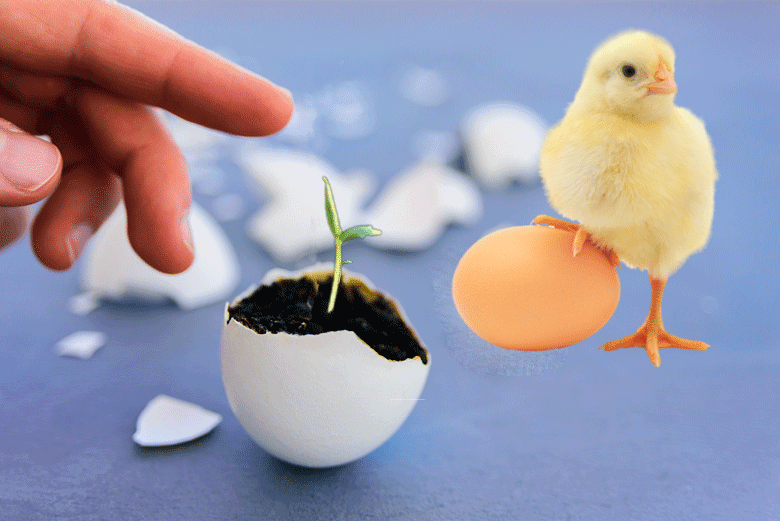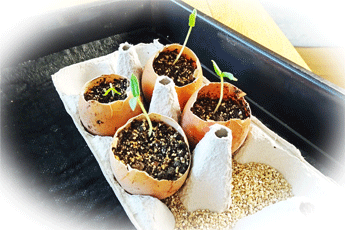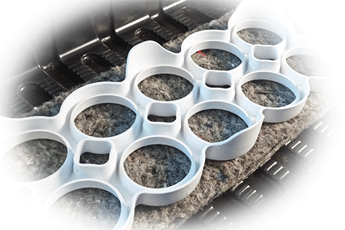
The Rocotos have hatched
I was delighted a few days ago when I discovered that four of my Rocoto seeds had germinated. I was even more pleased this morning when I found that another had burst into life. Considering I expected germination for these seeds to take up to twenty days, it was a pleasant surprise indeed.
Instead of the time I had expected, the first seeds germinated in only ten days. What made the event even more pleasing was that the new peat- free seed starting medium had worked like a charm. To become peat free in my Chilli growing, where previously i would have used peat pellets, I tried something else.
free seed starting medium had worked like a charm. To become peat free in my Chilli growing, where previously i would have used peat pellets, I tried something else.
To start these seeds, I used eggshells as seed starting containers. I filled the shells with John Innes seed starting compost that I had mixed with fifty percent vermiculite.
Okay, I have to admit that not everything was peat free. The John Innes compost contains a little . It was however, a bag of compost I already had on hand. It will have served no purpose to throw it out. When the bag is finished, I will look at other peat-free starting composts. I have already done some research, and I could possibly make my own seed starting compost by next season.
If you read my last post, you might recall that I also used the egg tray in which the eggs were packed to germinate the seeds. I filled the cavities in the egg trays with a little vermiculite to aid capillary action between the capillary mat in my self-watering propagator. The eggshells were placed on top of the vermiculite in these cavities
New propagation methods ?

How well did it work?
This method worked a treat. The compost vermiculite mix in the shells was kept only moist, which is the ideal condition for seed starting. This moistness, combined with the regulated temperature of the propagator, the first seeds germinated in just over a week. There are still six more seeds that still have to germinate, but so far, so good
To ensure that seedlings stay healthy, one thing that is required is to immediately place them under grow lights or sunshine once they have germinated. Not doing this results in the seedlings becoming leggy. They will search for a light source if it is not immediately available. In the process, they grow long unhealthy stems as they stretch to find light. If this is allowed, the seedlings become prone to all types of ailments. They will never fully recover and become vigorous plants
To place my Rocoto seedlings in shells under lights, I had to find some way to hold them in a light facing position. At this point, I had taken them out of the egg tray in the propagator. As a temporary measure, I placed the seedlings in their eggshell containers into 2-inch fibre pots. I then put the pots into a seeding tray and added about an inch of water. From previous experience, I learned that fibre pots are not very absorbent, so I cut holes in the bottom of the pots. This was to allow water to enter and keep the compost vermiculite mix moist
This could have worked to take the seedlings to their first potting-on, but it seemed an extravagant way of doing things. The only function the fibre had was to hold the eggshells upright. To me, that seemed a waste. So I went back to the drawing board
I came up with two ways that are far more cost-effective. The first was simply to build on the eggshell and egg ray concept. I still would fill the egg tray cavities with vermiculite and rest the eggs shells on top of that, but instead of using a self-watering propagator, I would use a seedling tray with a capillary mat placed in it. The egg tray with seedlings in it is placed on top of the capillary mat. Water is then added to the seed tray, and the whole capillary action process gets going.
The second idea was to use a plastic egg tray typically found in a refrigerator. The one I had in mind is an egg holder rather than a tray. It has cavities’ in the bottom. I placed the seedlings into the holder and then placed that into a seed tray.
All that was now required was to find a way to get the base of the eggs in contact with water. There was a gap between the bottom of the eggs and the seed tray. I could have simply filled the tray with a bit of water to achieve this, but somehow that idea seemed a bit hit and miss. Doing it like that posed the risk that the compost filled shells could become sodden if too much water was added. There was also the risk that the seedlings would get dried out if the water level dropped too low,
To solve this, I decided to use a double layer of capillary matting in the seedling tray. Doing this filled the gap. It meant the bases of the eggs shells could come in direct contact with the capillary matting. All that is now required is to ensure that the capillary matting is kept wet. To me, that sounds like a piece of cake.
Finally
For now, I have settled with the first method of using vermiculate filled egg rays in the seed tray with capillary matting. It seems to work well. I will try the other method with the eggshell holder when the other seeds germinate.
I think this is an excellent way to ensure that the seedlings don’t get too much water. Excess watering can lead to damping-off. Damping-off is a disease that strikes seedlings if the medium they are being grown in becomes waterlogged. At most, I am aiming to achieve a moist growing environment for these plants. I think this new method will provide exactly that


